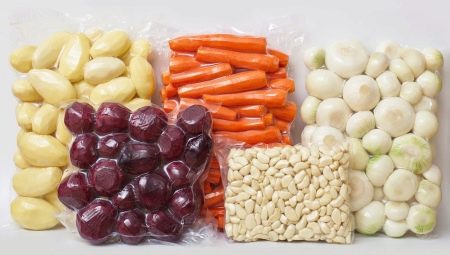Vegetables are very healthy, so they are included in the daily diet of many people. Naturally, the question arises of how to prolong their freshness and juiciness. A vacuum comes to the rescue here. It is used both in production for the sale of products, and at home to store purchased food. Consider the features and varieties of the vacuum packaging of vegetables, and also find out how it extends the shelf life of the contents.
Features
Air is one of the factors contributing to the rapid spoilage of products. If moisture is optimal for the development of bacteria, the process is accelerated. Vacuum packaging creates a space without oxygen and excess moisture, so the negative processes are suspended.
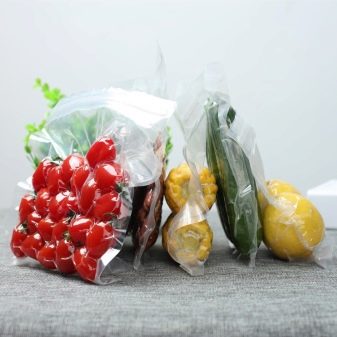
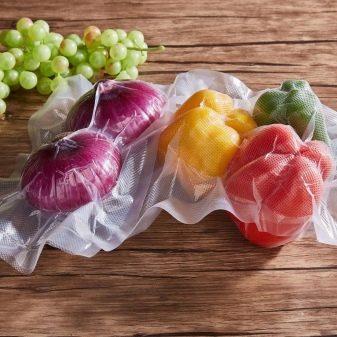
The advantages of this method of storing vegetables are obvious.
- Freshness extended products, even if they are not in the refrigerator.
- Consistency is maintained for a long time (degree of softness, elasticity, juiciness), drying and weathering processes are minimized. Vegetables remain usable and attractive in appearance. The latter becomes especially important when selling food in stores.
- The contents of the packaging do not absorb odors.
- Compared to storing in the freezer in ordinary bags, when the taste of food is lost, in this case it persists to a greater extent.
- In a vacuum, you can store both whole vegetables and sliced. The second option can be found on store shelves. Canned products, ready for consumption, are often bought by catering establishments, as well as people who have little free time. At home, this may be relevant if a person decided to prepare for the holiday in advance.
- Hygienic when transporting products, warehousing, being on store shelves. Dust and dirt do not get on the contents, which is especially important when selling slices. It can also be useful for outdoor enthusiasts.
- Transparent packaging allows customers to demonstrate the appearance of vegetables and make sure they are fresh.
- Products so packaged do not take up much space. This helps to more efficiently use warehouse and retail space. At home, this allows you not to clutter up the refrigerator.
- Since the amount of food thrown away due to spoilage is reduced, a person can appreciate the savings in finance.
- The simplicity of the technology allows it to be used both in production and at home. Any hostess can master the management of compact equipment.
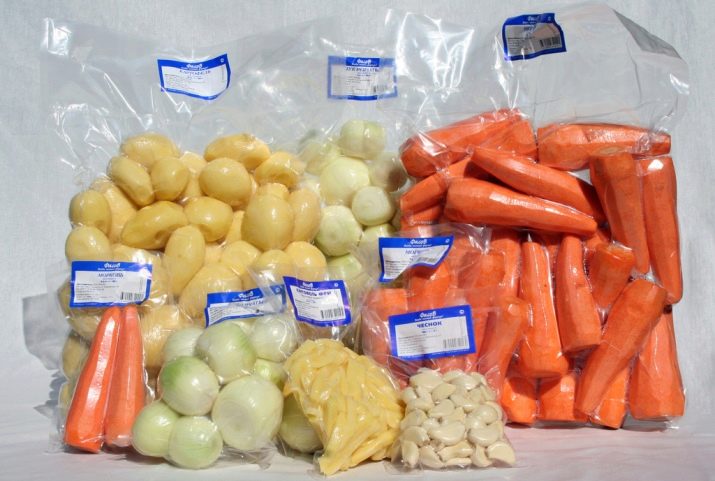
As for the cons, they are few.
- The film does not protect the contents well from damage; it can be torn or scratched. Therefore, for maximum safety, it is better to use containers.
- Sometimes sliced vegetables can stick to each other.
- Some bacteria can also develop in an airless environment. Therefore, sooner or later, the contents of the vacuum packaging will begin to deteriorate. Store vegetables for several years will not work.
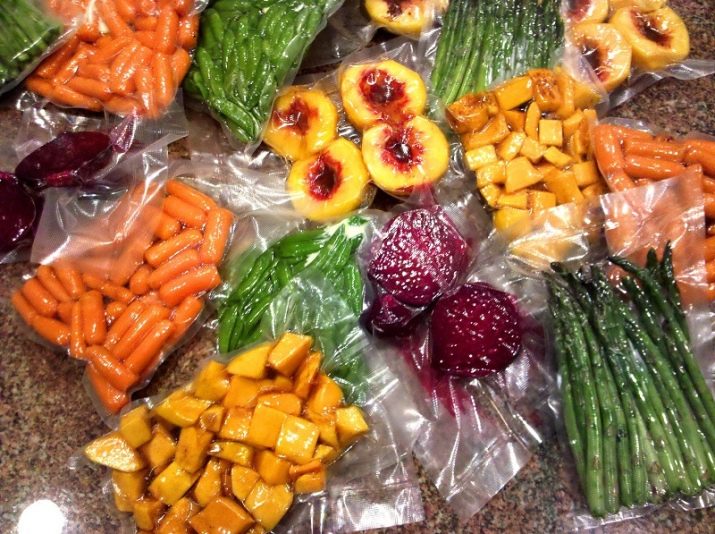
Varieties
The essence of evacuation is simple. Products are placed in a container. It can be a bag or a solid container. Then air is completely pumped out of the tank. For this, a special pump is used. The process can occur both automatically and with manual control.
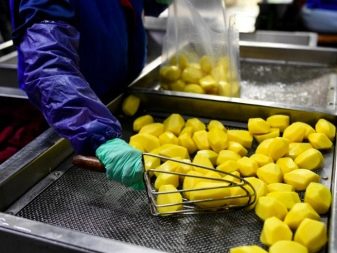
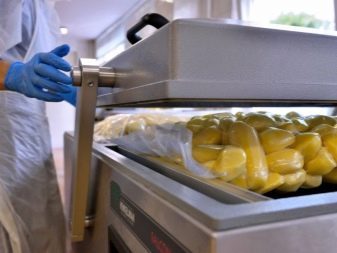
Producers usually pack film of vegetables for sale. It can be soft roll or hard blow bags. Also often used options with a backing.
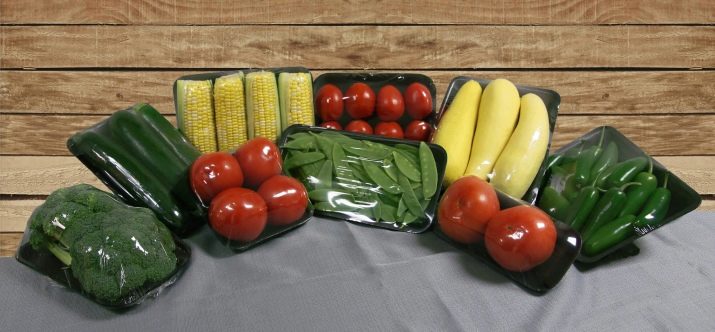
In everyday life, both film and containers are used. Some film products may have a valve and a fastener. Rolled models do not have additional parts, they are simply soldered from both ends. As for containers, they can be plastic or glass. Sizes and shapes vary.
There are models with hand pumps and convenient electrical options that do not require special skills for control.
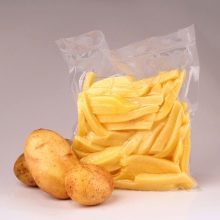

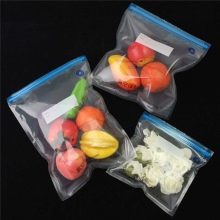
Necessary equipment
We can conditionally distinguish 2 groups of sealed packaging: for trade and for home use.
Industrial packaging
Packing in bags at the production is carried out using professional chamber machines. A portion of vegetables is placed in a bag and placed in a special compartment. A button is pressed, after which air is automatically removed from the chamber and the package itself. After this, the sealed packaging is sealed.
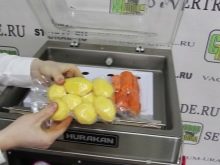
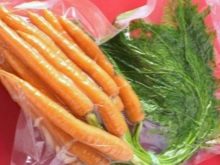
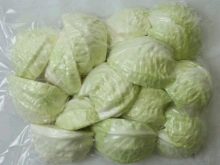
If a substrate is used, thermoforming machines are used. They do not have cameras. The end of the bag is simply placed in an apparatus that pumps air. As a result, the film tightly fits the contents, protecting it from external influences and bacteria.
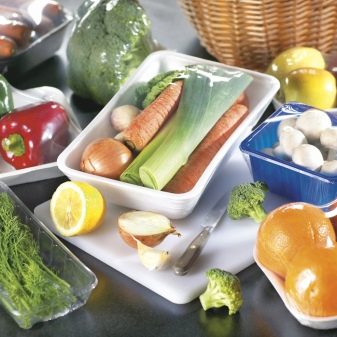
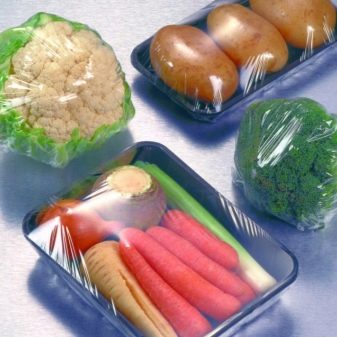
It is worth noting that if we talk about the release of packaged vegetables for their sale, the described equipment will be used only at the last stage. And before that vegetables must go through several more stages of processing.
The process begins with a thorough washing of the raw materials. After the washer, the vegetables get on a roller cleaning to remove the peel (if necessary). Then the products go to the inspection table for visual inspection. Then, potatoes are sulphitated to prevent browning. Other vegetables are dried and chopped if necessary.
Only then does the packaging process using vacuum.
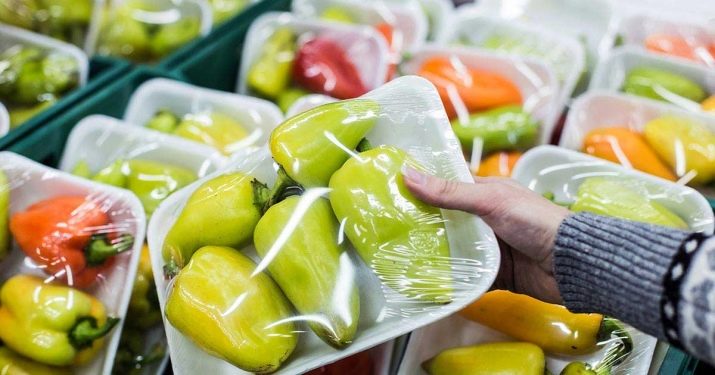
Home
In everyday life, tubeless installations are used. They are desktop and built-in kitchen furniture. As a rule, these are compact multifunctional models. Hand pump options are rarely used today. They were replaced by devices that automatically pump air from a bag or container.
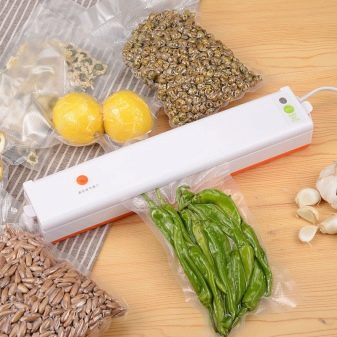
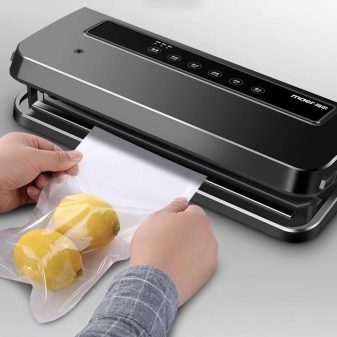
In such containers store vegetables from their own garden or bought in the store by weight. Sometimes people make blanks for the winter. Depending on the desire of the consumer, vegetables can be raw or peeled and boiled, chopped or whole. Depending on this, as well as on storage conditions, the expiration date also varies.
Anyway products must be fresh and washed.
It is worth remembering that if it was decided to cook vegetables before evacuation, first you need to wait for them to cool completely and only then pack.

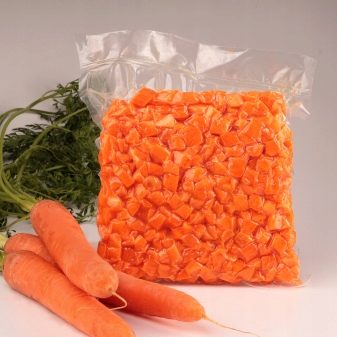
Shelf life and storage conditions
Fresh vegetables in a vacuum are kept in excellent condition for up to 2 weeks. Boiled can wait up to 12 days. If the vegetables are dried before being placed in airtight packaging, their shelf life will increase to 12 months. If you want to make winter preparations, it is better to place containers in the freezer. Frozen foods may be usable all year long.
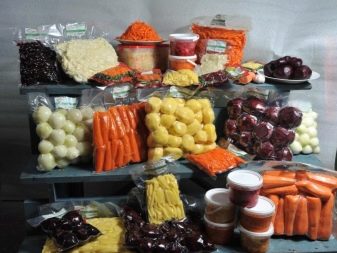
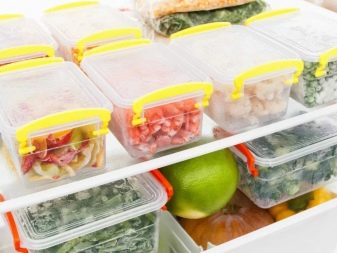
Another option for preparing a vitamin reserve for evacuation is blanching. This is boiling water treatment. This procedure not only increases the shelf life of vegetables, but also allows them to remain fragrant and juicy. Carrots, beets and other similar root crops in this case are processed for about 5 minutes. Greens are kept in boiling water for 2 minutes.
After this, the products are left for some time to cool and dry. Only after that they are placed in a container or bag, air is removed from the package. If all the steps have been completed correctly, the contents of the sealed container can be stored for 3-4 weeks. After blanching and sealing, pasteurization is carried out at the production site.
Due to this, the shelf life of food increases to 50-60 days.
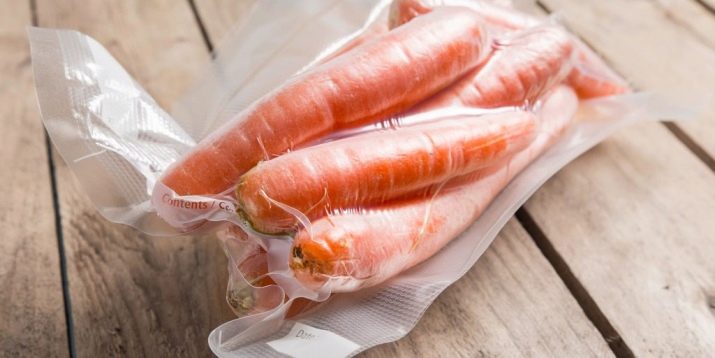
Of course, all the indicated periods apply only if if the contents were placed in a vacuum fresh and the packaging was not damaged.
It is also worth observing the optimal storage conditions. Do not leave containers under direct sunlight or in a place with high humidity.
In addition to the nuances described above, it is worth considering that different vegetables deteriorate at different speeds. For example, dense varieties (beets, carrots, potatoes) are stored longer.
Cauliflower, broccoli and other similar crops lose their usability faster.
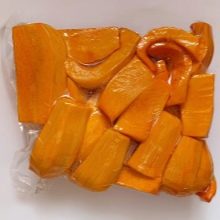
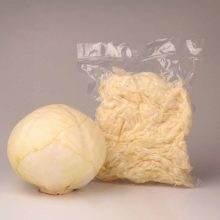
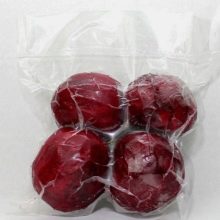
Well, of course, if you periodically open the container to take a couple of pieces, and then seal again, this will significantly reduce the shelf life of the contents. Therefore, it is recommended to pack vegetables in small batches, so that you can take one portion without worrying about the rest of the products.
See how to pack vegetables using a home vacuum cleaner in the video below.
